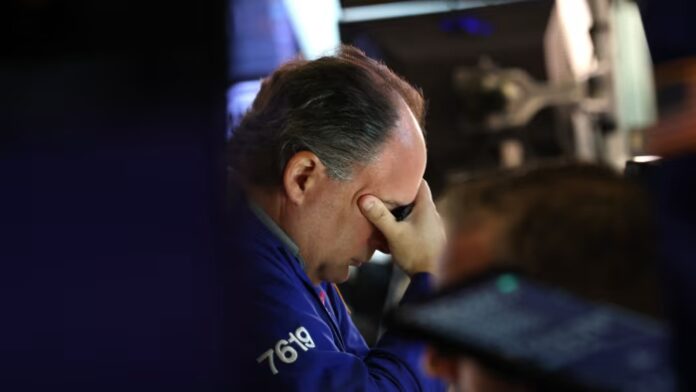Unlock the White House Watch newsletter for free
Your guide to what Trump’s second term means for Washington, business and the world
US stocks suffered their biggest one-day drop since April after Donald Trump threatened to impose “massive” tariffs on China, reigniting fears of a full-blown trade war between the world’s two largest economies.
In a post on Truth Social, the president accused Beijing of becoming “very hostile”, citing its recent decision to impose export controls on critical minerals.
The blue-chip S&P 500 lost 2.7 per cent on Friday, its worst decline since falling 3.5 per cent on April 10, when markets were reeling from Trump’s initial ‘liberation day’ tariff announcements.
More than four in five stocks in Wall Street’s benchmark index were in negative territory in New York. Following Trump’s post, a measure of stock market volatility, Cboe’s Vix, jumped to its highest level since June.
The tech-heavy Nasdaq Composite lost 3.5 per cent. Both indices had hit a series of record highs in recent weeks.
Investors flocked to safe haven assets in response, sending the price of government bonds and gold higher.
The yield on the benchmark 10-year Treasury fell 0.09 percentage points to 4.06 per cent following the news. Bond yields move inversely to prices.

The price of gold rose to oscillate around the $4,000-per-troy ounce milestone. Bullion first hit the major level on Wednesday morning following a dizzying rally in recent months driven by investor fears over inflation and growing debt piles.
Friday’s stock market sell-off “would be bigger if investors did not assume that [China and the US] will still strike a deal”, said Manish Kabra, head of US equity strategy at Société Générale.
Trump’s social media post and China’s new export controls were likely “negotiating tactics”, Kabra added, noting that Treasuries were not selling off on Friday as they had in the wake of the president’s “liberation day” tariff announcement in April.
Other investors said the sell-off was already prompting interest from dip buyers.
“We have not seen a material uptick in selling so far on this news. If anything, we have received incomings on what should be bought on the pullback,” said Joe Anastasio, head of North America equities sales trading at Citi.
Oil prices, which were already lower following the start of Israel’s truce with Hamas, extended declines following Trump’s latest sabre-rattling on trade. Brent crude, the international benchmark, fell 3.8 per cent to settle at $62.73 a barrel.
West Texas Intermediate, the US marker, traded down to $58.51/b in late afternoon in New York — its lowest price since May and below the price some shale producers need to break even.
Bitcoin fell 4 per cent to $116,906 a token.
The US-China fallout will create “short-term higher volatility but might provide good entry levels”, said Matthias Scheiber, head of multi-asset at Allspring Global Investments. “The fundamentals in the US have been improving and earnings are strong.”
Europe’s Stoxx 600 closed 1.2 per cent lower and London’s FTSE 100 lost 0.9 per cent.
Source link






